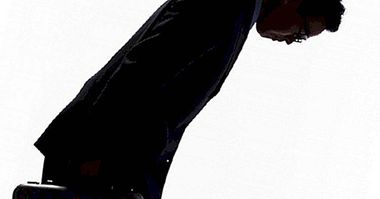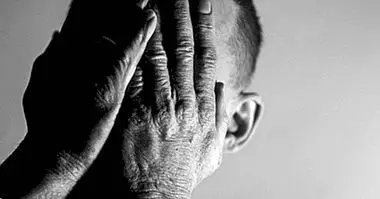Bibliofobia (fear of books): causes, symptoms and treatment
Phobias are a type of anxiety disorder quite common . Human beings can be afraid of many stimuli and it can be normal; however, phobic disorders are characterized because the fear they provoke is irrational.
Virtually everyone would be afraid to be alone with a lion, but not with a clown. There are individuals who feel terror when they are close to these funny characters, which is known as coulrophobia.
Phobias create discomfort and anxiety to the person who suffers, which tends to avoid the phobic stimulus that produces this unpleasant sensation. There are different types of phobias, one of them is the bibliofobia or fear of books and reading . In this article we will discuss this phobia and explain its causes, symptoms and consequences.
What is bibliofobia
The bibliofobia is a phobia and, therefore, an irrational fear of a phobic stimulus, in this case to books and reading . It usually starts at an early age, for example, at school when children may have some unpleasant experience with reading. Imagine a child who has difficulty reading and has to read a text out loud because the teacher asks him to do so.
In front of the class, the child begins reading, but he does it very slowly and the words are the fruit of nerves. The child becomes increasingly nervous, and the laughter of the classmates makes him feel so bad that this experience does not forget him. As the years go by he keeps remembering this situation lived every time he has to read a text. That unpleasant experience marks him, and he feels great discomfort when he sees a book or he has to read it. In fact, avoid books at all costs in their hands because they cause great anxiety.
Causes
As you see, one of the origins of this phobia can be a traumatic experience, and as in the previous example, it usually starts at an early age. The learning of this irrational fear can occur by a type of associative learning called classical conditioning, and the reasons for these unpleasant experiences can be lack of understanding of the text and low self-esteem, different learning disorders or bullying and mockery for not read correctly.
One of the most important characteristics of this type of learning is that it involves reflex or automatic responses , not voluntary behaviors. Classical conditioning is the connection between a new stimulus and an existing reflex, therefore, it is a type of learning according to which an originally neutral stimulus, which does not provoke a response, ends up provoking an associative connection of this stimulus with the stimulus that normally it provokes said response.
Characteristics of classical conditioning
One of the great theorists of classical conditioning was Ivan Pavlov, who devoted part of his life to his study, and is famous for his experiments with dogs.
Ivan Pavlov was not a psychologist but a physiologist who wanted to investigate the salivation process of dogs. His experiment consisted in measuring the saliva of the dogs when he presented them with food. However, this intelligent character realized that, after showing them the food repeatedly, the animals salivated even when the food was not present, simply in the presence of Pavlov, because the dogs knew that when he appeared by the door they would receive the delicacy. This happened because the dogs had learned that Pavlov's presence was equal to the presence of food.
Undoubtedly, Pavlov was important for providing knowledge and data on this phenomenon, but the first scientist who investigated the conditioning with humans was John Watson. It is known for one of the most famous experiments in history and at the same time controversial, but it served to understand what happens in our body when we have a phobia. In the following video you can find explained the Watson experiment.
Other causes of fear of books
The learning of phobias by classical conditioning refers to the fact that the environment plays a determining role for a person to be phobic. However, other theorists have said throughout history that this disorder could have a genetic origin, that is, some people may be more likely to suffer from this pathology due to inheritance.
In addition, there is another theory called the "theory of preparation" by Seligman, which states that the fear response is key to the survival of the human being, since it activates the fight-flight response in situations of danger. Therefore, biologically we are programmed to be afraid of certain stimuli more easily.This type of associations are called primitive and non-cognitive, which are not easily modified by logical arguments.
Symptoms of this phobic disorder
Although there are different types of phobias, they all share the same symptoms, the only thing that varies is the phobic stimulus that causes them. Phobias are characterized by the discomfort and anxiety they generate and by the avoidance behaviors they provoke.
When a person feels an irrational fear of books or reading, it tends to avoid those situations in which it may be in contact with this stimulus that causes an unpleasant sensation .
In summary, the symptomatology of phobias is:
- Extreme anxiety and fear of the presence or imagination of the phobic stimulus.
- Accelerated heartbeat.
- Tremors
- Avoidance behavior
- Thoughts that the person is going to run out of air.
- Thoughts of great discomfort.
- Hyperventilation.
- Stunning, nausea, dizziness and headaches.
- Hipersudation
- Pain or tightness in the chest.
Treatment and therapy
Like the great majority of phobias, the treatment that has the greatest scientific endorsement is cognitive behavioral therapy , which consists of correcting and modifying those thoughts or behaviors that cause discomfort in the patient. There are several techniques that are used, among them, relaxation techniques or exposure techniques.
The latter is the treatment par excellence, and more specifically the expository technique of systematic desensitization, which involves exposing the patient gradually to the phobic stimulus while learning effective coping tools.
However, other types of psychological therapy have also shown their effectiveness in different studies, for example, Mindfulness or Acceptance and Commitment Therapy.
In severe cases, treatment with drugs can also work, as long as it is not the only therapeutic option and is combined with psychotherapy.



















